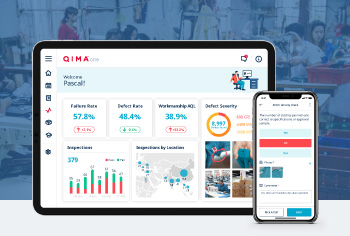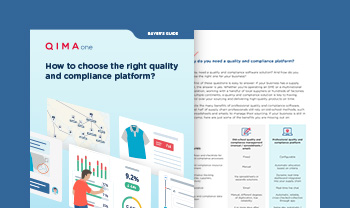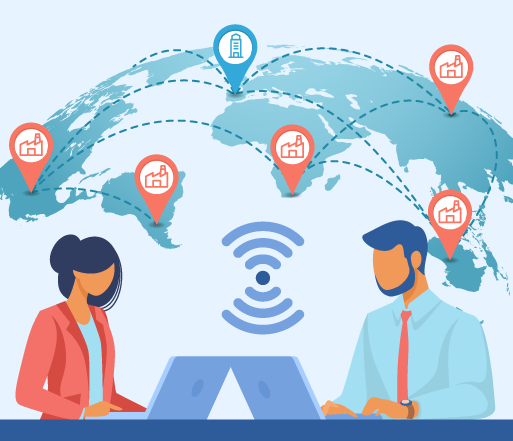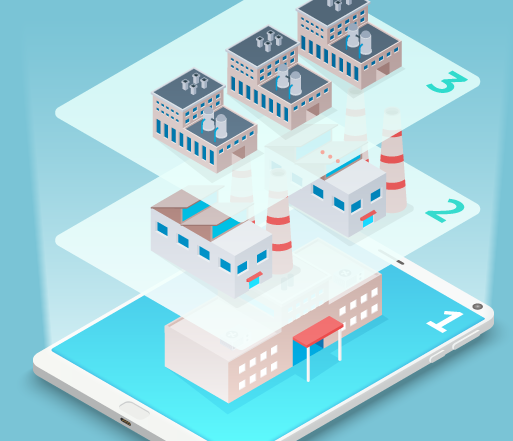
Articles
Multi-Tier Supply Chain Visibility: The Benefits and Challenges in Improving Multi-Tier SCV

Articles
Multi-Tier Supply Chain Visibility: The Benefits and Challenges in Improving Multi-Tier SCV
Articles
Multi-Tier Supply Chain Visibility: The Benefits and Challenges in Improving Multi-Tier SCV

Manténgase al día con la información más reciente sobre la cadena de suministro.
Multi-tier supply chain visibility is one of three common types of supply chain visibility (SCV), along with real-time and end-to-end. Multi-tier SCV refers specifically to attaining visibility into each level of a supply chain from the most proximate level all the way to tier 3+ suppliers. In this article we break down how companies benefit from having multi-tier supply chain visibility and the challenges faced in attaining it.
Recap: What Is Supply Chain Visibility?
Supply chain visibility (SCV) is the knowledge and understanding of operations throughout an entire supply chain (including all stages and operational processes). This enables companies to better manage the flow of products and components through each step of the supply chain.
Supply chain visibility fosters trust within the supply chain, reduces the risk of disruptions and prevents regulatory compliance and product quality issues. Multi-tier visibility also helps you spot opportunities within your operations to increase operational efficiency, customer satisfaction, and profits.
More Info: Supply Chain Visbility
Key Takeaways of Multi-Tier Supply Chain Visibility
- Better product quality: supply chain visibility allows supply chain managers to monitor each tier of their supply chain, helping to improve product quality, ensure supplier compliance, and increase supply chain efficiency.
- Risk mitigation: Multi-tier SCV can be difficult to implement given the complexity of modern global supply chains. However, these challenges can be overcome with effective planning, supply chain mapping, and leveraging of modern technology to monitor each tier of the supply chain and to mitigate risk.
- Better supplier collaboration: Multi-tier supply chain visibility allows for improved supplier collaboration based on common goals and data-sharing, which leads to greater supplier performance and assurance of compliance with ethical, environmental, and other production standards.
What Is Multi-Tier Supply Chain Visibility?
A multi-tier supply chain is a global supply chain composed of various levels of suppliers and suppliers of suppliers. This complexity makes it difficult for buyers to monitor the supply chain as a whole. While the buyer (brand, retailer, vendor) may work directly with several suppliers, known as the first tier, each of these companies has its own suppliers known as tiers 2. Tier 2 suppliers can have their own suppliers (tier 3) and so on.

Multi-tier supply chains are becoming increasingly popular. However, multi-tier supply chains make it difficult to maintain visibility and control in each step of the supply chain.
Multi-tier supply chain visibility is the knowledge and understanding of all stakeholders in your supply chain, including the operations occurring at every tier. Most companies have visibility of their direct suppliers (tier 1), but lack visibility farther back in the supply chain. The companies who have visibility throughout all tiers gain an advantage over competitors.
Perform easy self-inspections
with your factories
Download
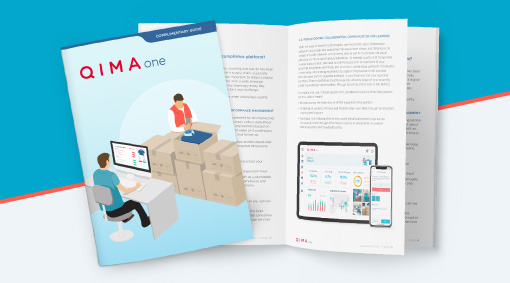
Perform easy self-inspections
with your factories
Download
4 Benefits of Multi-Tier Supply Chain Visibility
In 2021, only 15% of chief procurement officers had visibility beyond their tier 1 suppliers, representing a missed opportunity to reduce costs and improve efficiency. A strong multi-tier supply chain visibility strategy allows you to reduce risk and foster sustainable growth to help you move beyond the competition.
1. Increased Collaboration
Increased collaboration with suppliers has been shown by McKinsey to increase company growth, increasing profits by 7-10%, and lowering costs by as much as 5-10%.
Multi-tier supply chain visibility makes communication beyond tier 1 easier, which allows for faster responses to problems. The ability to communicate directly with a tier 2 supplier, rather than having to ask your direct supplier to communicate for you, ensures that you can react quickly to potentially disruptive situations.
2. Reduced Risks
Stakeholders at every level of the supply chain have different associated risks that vary by the type of supplier, their geographic location, and their management style. Multi-tier supply chain visibility helps you plan for and react to varied risks throughout the supply chain with more informed decision-making and increased speed.
Some risks may also lay deep in the supply chain; without knowledge of these risks, you risk being surprised by disruptions stemming from higher tiers of your supply chain. Multi-tier supply chain visibility helps you avoid disruptions by increasing your ability to plan for and appropriately manage these risks.
Multi-tier supply chain visibility also helps you ensure that all your suppliers are compliant with regulations such as product safety regulations or fair labor laws. Knowledge of compliance throughout your supply chain helps you get to market faster by making it easier to demonstrate compliance, and helps reduce the risk of recalls.
3. Increased Supplier Performance
Multi-tier supply chain visibility allows for increased understanding of supplier performance and business models. Gathering and analyzing information on suppliers beyond tier 1 helps you to prioritize high-performing, dependable suppliers and to better train and control the others. This will not only reduce risks and increase efficiency, but can increase product quality and consumer satisfaction in the long run.
4. Improved Sustainability and Social Responsibility
Multi-tier supply chain visibility helps you ensure that all suppliers are adhering to ethical and environmental standards of your brand. Consumers today are increasingly concerned about choosing environmentally and ethically-conscious brands; in fact, 60% of young consumers consider a company’s ethical values before making a purchase, and many consumers will not consider a second purchase from a company that relies on an unethical supplier, even if the company claims ignorance. Successful companies simply cannot afford to ignore the ethical and environmental practices of suppliers deeper in the supply chain.
Challenges in Achieving Multi-Tier Supply Chain Visibility
There are several challenges that hinder effective implementation of multi-tier supply chain visibility.
- Inadequate planning: Companies who implement the systems needed to achieve SCV invest considerably in planning and risk mitigation before taking action. As with all new initiatives, a realistic timeline and proper resource allocation will significantly reduce the risk of supply chain disruptions as you make improvements.
- Lack of appropriate data-management and analysis systems: Even if you’re able to gather data from multiple tiers of your supply chain, the data is only useful if it is properly organized and analyzed. True visibility is not just having the data in front of you, but the ability to understand it and use it to make informed decisions.
- Variation in suppliers’ management systems: Many different suppliers use different data tracking or reporting systems. Unstandardized reporting may hinder your ability to gather the same types of information from multiple suppliers or may make interpreting the data difficult.
- Lack of supplier cooperation: Suppliers in higher tiers of your supply chain may be unwilling to divulge information about the risks they face so as not to jeopardize their relationships with others in their network. This can make it difficult to get a realistic picture of the risks your suppliers face, and thus the risks that may impact you in the future.
How to Improve Multi-Tier Supply Chain Visibility
As most supply chain managers know, gaining visibility across each tier of the supply chain is no easy task. However, for many, the benefits of a transparent supply chain outweigh the difficulty in improving multi-tier SCV. Here are a few actionable recommendations for you to improve your visibility across the supply chain.

1. Map Your Supply Chain
The first step in increasing visibility is to create a map of each tier within your supply chain. Include the relationships every stakeholder has, both between other stakeholders on the same tier and in tiers below or above them. Successful mapping helps you understand where information gaps exist in your current quality management system, which lays a strong foundation to address these issues and build increased visibility.
2. Evaluate Your Current Supply Chain
Analyzing the information in your supply chain map helps you identify pain points and other areas for improvement.
It’s best to begin by assessing your tier 1 suppliers, as these are the suppliers over which you hold the most influence. You may find it helpful to begin by asking yourself the following questions:
- How is information currently being shared? Is information being shared across tiers?
- Who needs access to supply chain information? Why?
- What information is shared, and when?
- Are we missing any important information about our direct suppliers, or suppliers in higher tiers?
- What risks do our suppliers have? How will these risks impact us?
- How agile is our supply chain? How quickly can we make decisions and implement changes?
- How diversified is our supplier sourcing? Are there any suppliers we are relying on too much?
- What vulnerabilities do we have, how important are these to our performance, and how can we mitigate these?
It’s recommended that you review these questions frequently in order to take full advantage of increased visibility’s benefits.
3. Implement improvements
Use the insights you’ve gathered to implement changes and use clear metrics to monitor progress. You can iterate over time to reach your targets and make your products more competitive. Conducting self-inspections and audits at each tier of the supply chain and triggering necessary corrective action plans in collaboration with all the factories can help businesses prevent major defects and minimize poor quality costs by identifying the root causes earlier in the process.
4. Utilize Technology
Technology like cloud-based platforms and machine learning helps you manage and analyze the large amounts of data needed to garner deeper supply chain insights. For example, supply chain quality and compliance management software can provide crucial insights into trends in your product quality, compliance, supplier relationships, and areas for improvement. Quality and compliance management software like QIMAone can help manage supplier relationships across tiers, as it helps standardize information reporting and makes communication across tiers easier. Finally, supply chain quality and compliance management software can help automate supply chain processes such as processing or tracking orders and shipping, which can help reduce time spent managing this process.
Innovative companies are using technology to make major changes to their supply chain. For example, e-commerce furniture company Simpli Home is using supply chain technology to ensure high product quality, improve decision making, and reduce the impacts of supply chain disruptions.
How QIMAone platform can help
QIMAone quality and compliance platform offers an intuitive solution to easily map your supply chain from the raw material factories to the warehouses and retail stores. QIMAone gives supply chain leaders including quality control and compliance managers a complete picture of your sourcing landscape.
Would you like to learn how you can leverage supply chain tools to help you gain more visibility in your supply chain? Book your free strategic call with our experts today!
Related Articles
- Learn how real time supply chain visibility increases supply chain performance.
- Supply Chain Visibility Software for Current and Future Improvements - Learn how supply chain visibility software helps reduce supply chain disruptions, ensure quality control, achieve regulatory compliance and increase profits.
Artículos más populares
Planes de Acción Correctiva 101: Su guía de referencia para garantizar excelencia en la calidad de la cadena de suministro
Las ventajas de una cadena de suministro basada en datos
6 Benefits of Supply Chain Visibility
Cómo implementar un sistema de gestión de calidad
Simpli Home: Garantizar la calidad y el cumplimiento de los productos con la tecnología de la cadena de suministro
7 formas eficaces de mejorar el sistema de gestión de calidad
Supply Chain Visibility: Complete Guide for Supply Chain Managers
Mejore su control de calidad con métricas de rendimiento del proveedor

